Related Research Articles
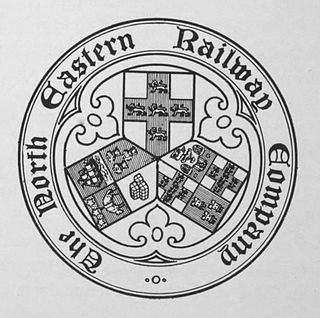
The North Eastern Railway (NER) was an English railway company. It was incorporated in 1854 by the combination of several existing railway companies. Later, it was amalgamated with other railways to form the London and North Eastern Railway at the Grouping in 1923. Its main line survives to the present day as part of the East Coast Main Line between London and Edinburgh.

The Hull–Scarborough line, also known as the Yorkshire Coast Line, is a minor railway line in northern England used primarily for passenger traffic. It runs northwards from Hull Paragon via Beverley and Driffield to Bridlington, joining the York–Scarborough line at a junction near Seamer before terminating at Scarborough railway station.

Lealholm is a railway station on the Esk Valley Line, which runs between Whitby and Middlesbrough. The station serves the village of Lealholm in North Yorkshire, England. It is owned by Network Rail and managed by Northern Trains.

Sleights is a railway station on the Esk Valley Line, which runs between Whitby and Middlesbrough. The station serves the villages of Briggswath and Sleights in North Yorkshire. It is owned by Network Rail and managed by Northern Trains.
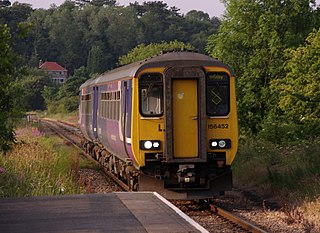
Ruswarp is a railway station on the Esk Valley Line, which runs between Whitby and Middlesbrough. The station serves the village of Ruswarp in North Yorkshire. It is owned by Network Rail and managed by Northern Trains.

Pickering railway station is the southern terminus of the North Yorkshire Moors Railway and serves the town of Pickering in North Yorkshire, England.
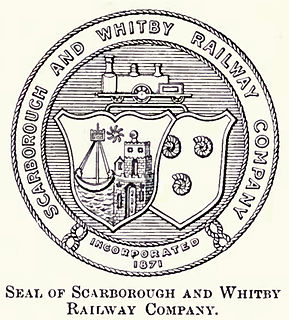
The Scarborough & Whitby Railway was a railway line from Scarborough to Whitby in North Yorkshire, England. The line followed a difficult but scenic route along the North Yorkshire coast.

Forge Valley railway station was situated on the North Eastern Railway's Pickering to Seamer branch line. It served the twin villages of East and West Ayton, and the local beauty spot Forge Valley. The station opened to passenger traffic on 1 May 1882.

Wykeham railway station was situated on the North Eastern Railway's Pickering to Seamer branch line. It served the villages of Wykeham and Ruston in North Yorkshire, England. The station opened to passenger traffic on 1 May 1882, and closed on 3 June 1950.

Sawdon railway station was situated on the North Eastern Railway's Pickering to Seamer branch line in North Yorkshire, England. It served the village of Brompton-by-Sawdon and to a lesser extent Sawdon itself. The station opened to passenger traffic on 1 May 1882, and closed on 3 June 1950. The station has been restored completely, as holiday accommodation.
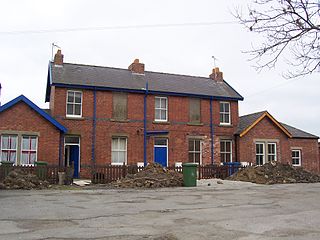
Snainton railway station was situated on the North Eastern Railway's Pickering to Seamer branch line. It served the village of Snainton, North Yorkshire, England. The station opened to passenger traffic on 1 May 1882, and closed on 3 June 1950. Snainton railway station has also been restored and is currently in single ownership.
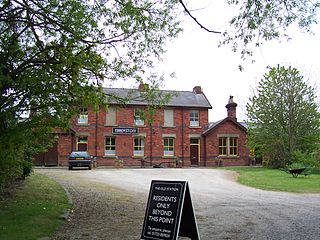
Ebberston railway station was situated on the North Eastern Railway's Pickering to Seamer branch line. It served the villages of Allerston, Ebberston and Wilton. The station opened to passenger traffic on 1 May 1882, and closed on 3 June 1950. The station has been restored completely, with track laid along the platform. Three camping coaches are available for hire as holiday accommodation.
The Forge Valley Line was a 16 mile long branch of the North Eastern Railway between Seamer and Pickering. The line was intended to link Scarborough with Pickering. It opened in 1882 and closed in 1950, with the exception of a stretch from Pickering to Thornton Dale which remained open for quarry traffic until 1963.

Ravenscar was a railway station on the Scarborough & Whitby Railway and served the village of Ravenscar, North Yorkshire, England.

Whitby West Cliff railway station was a railway station on the Whitby Redcar and Middlesbrough Union Railway. It was opened on 3 December 1883, to serve the West Cliff area of the town of Whitby, North Yorkshire, England. It was one of two stations serving Whitby; the other was Whitby Town railway station, which served the lines to Malton and Battersby.
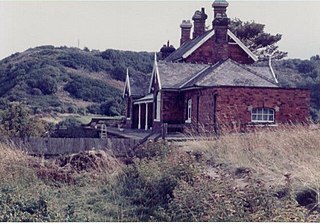
Sandsend railway station was a railway station on the Whitby, Redcar and Middlesbrough Union Railway. It was opened on 3 December 1883, and served the villages of Sandsend and Lythe. It closed on 5 May 1958. The station building is now a private residence. It was the only station between Whitby and Loftus not to possess a passing loop.
The Rosedale Railway was an 19.5-mile (31.4 km) goods-only railway line running from Battersby Junction via Ingleby Incline, across the heights of the North York Moors in North Yorkshire, England to reach iron ore deposits in the remote hills of the Rosedale valley. It opened to traffic as a narrow gauge railway to Ingleby Incline top in 1858, converted to standard gauge and opened to Rosedale West in 1861, and closed completely in 1929. Apart from Ingleby Incline, no major engineering works were constructed, and as such, particularly the east branch, the railway followed the contours of the surrounding hillside. The former trackbeds of the railway are in use by walkers and cyclists.

Potto railway station was a railway station built just north of the village of Potto in North Yorkshire, England. The station was on the North Yorkshire and Cleveland's railway line between Picton and Stokesley. The line was extended progressively until it met the Whitby and Pickering Line at Grosmont. Potto station was closed in 1954 to passengers and four years later to goods.

Boosbeck railway station was a railway station serving the village of Boosbeck in the ceremonial county of the North Riding of Yorkshire in England. The station was opened in 1878 and closed to passengers in 1960 with freight services being stopped in 1964.

Whitby engine shed was a steam locomotive depot located at the south end of Whitby railway station in North Yorkshire, England. The shed was opened in 1847, extended in the 1860s, and closed in 1959, when the closure of lines and dieselisation of the routes from Whitby took hold. The shed building, which was grade II listed in 1991, still stands, being utilised for various enterprises, and is now used as holiday accommodation.
References
- ↑ "The borough of Scarborough | British History Online". www.british-history.ac.uk. Retrieved 12 August 2019.
- ↑ Hoole, Ken (1974). A regional history of the railways of Great Britain. Vol. 4, North East England (2 ed.). Newton Abbot: David & Charles. p. 86. ISBN 0-7153-6439-1.
- ↑ Fawcett 1995, p. 53.
- ↑ "Waddell v. the North-Eastern[sic] Railway Company". The York Herald (13, 340). 7 March 1894. p. 5. OCLC 877360086.
- ↑ Lidster 2011, p. 16.
- ↑ Hoole, Ken (1985). Railway stations of the North East. Newton Abbot: David & Charles. p. 186. ISBN 0-7153-8527-5.
- ↑ Fawcett 1995, p. 65.
- ↑ Lidster, J Robin (1985). The Scarborough & Whitby Railway : a centenary volume : a pictorial and documentary record celebrating the one hundredth anniversary of the opening of a Yorkshire coast railway. Colne: Hendon. p. 7. ISBN 0-86067-097-X.
- ↑ Chapman 2008, p. 70.
- ↑ Fawcett 1995, p. 72.
- ↑ Lidster 2011, p. 18.
- ↑ Lidster, J Robin (1985). The Scarborough & Whitby Railway : a centenary volume : a pictorial and documentary record celebrating the one hundredth anniversary of the opening of a Yorkshire coast railway. Colne: Hendon. p. 8. ISBN 0-86067-097-X.
- ↑ Hoole, Ken (1983). Railways of the North York Moors : a pictorial history. Clapham: Dalesman Books. p. 45. ISBN 0-85206-731-3.
- ↑ Lidster 2011, p. 14.
- ↑ Bairstow, Martin (2008). Railways around Whitby : Scarborough - Whitby - Saltburn, Malton - Goathland - Whitby, Esk Valley, Forge Valley and Gilling lines. Farsley: Martin Bairstow. p. 111. ISBN 978-1-871944-34-1.
- ↑ Chapman 2008, p. 21.
- ↑ Shannon, Paul (2009). Diesel decades : 1990s. Hersham: Ian Allan. p. 16. ISBN 978-0-7110-3384-9.
- ↑ Fawcett 1995, p. 84.
- ↑ "Developers eye up tunnel vision". The Scarborough News. 17 October 2007. Retrieved 10 August 2019.
- ↑ Robinson, Maureen (16 July 2016). "Your Day Out: A day on the rail trail" . infoweb.newsbank.com. Retrieved 19 August 2019.
Sources
- Chapman, Stephen (2008). Railway Memories No. 19: York to Scarborough, Whitby & Ryedale. Todmorden: Bellcode Books. ISBN 9781871233193.
- Fawcett, Bill (1995). A History of the York-Scarborough Railway. Cherry Burton: The Hutton Press. ISBN 1-872167-71-3.
- Lidster, Robin (2011). Scarborough and Whitby Railway Through Time. Stroud: Amberley. ISBN 978-1-84868-668-7.